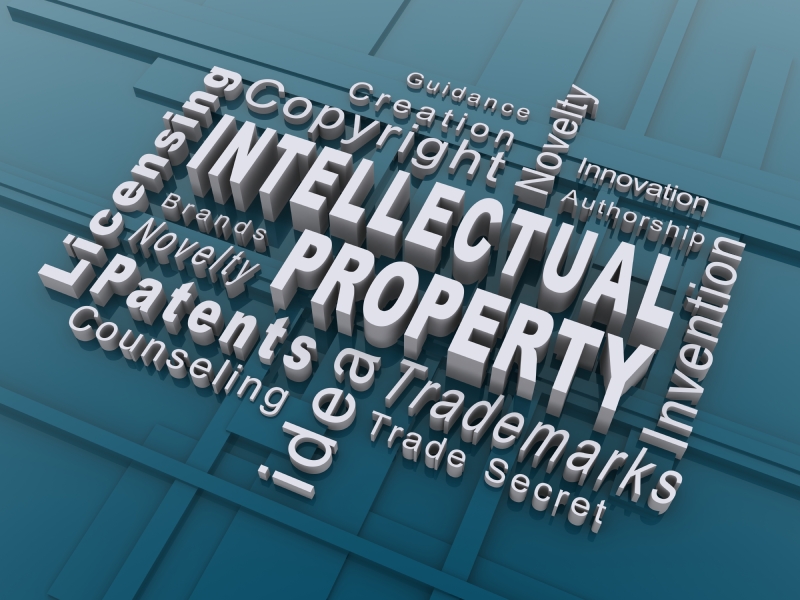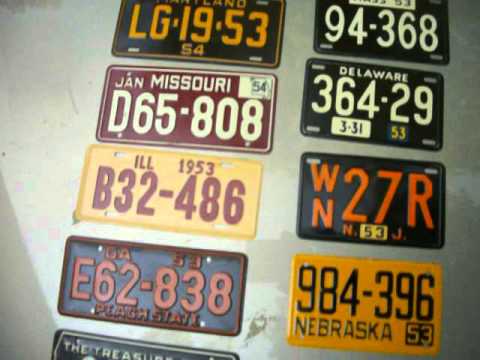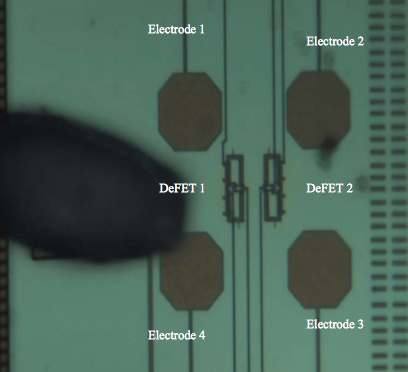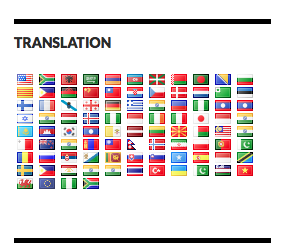
Seven Step Strategy for conducting preliminary searches of U.S. patents and published applications
This is a suggested Seven Step Strategy for conducting preliminary searches of U.S. patents and published applications using free online resources of the USPTO and its bi-lateral partner EPO (European Patent Office). Patent and Trademark Resource Centers (PTRCs) (www.uspto.gov/ptrc) are available nationwide to provide training on this Seven Step Strategy.
PTRCs provide online access to the PatFT (Patents Full-Text and Image) and AppFT (Applications Full-Text and Image) databases on the USPTO website and the Espacenet Worldwide Database on the EPO website. In addition, most PTRCs provide access to additional USPTO patent databases available through PubWEST (Public version of the Web-based Examiners Search Tool) and PubEAST (Public version of the Examiners Assisted Search Tool). Always call your nearest PTRC to make an appointment before visiting to make the best use of your time.
The use of patent classification in searching U.S. patents and published applications usually results in a more comprehensive search than one done by word and phrases (keyword searching). Because keyword searching must anticipate the often technical language of patents, it serves best as a supplement to a classification search. Accordingly, patent classification searching is the focus of the Seven Step Strategy.
The USPTO has transitioned from using the over 100 year old U.S. Patent Classification (USPC) system to Cooperative Patent Classification (CPC), a new classification system jointly developed with the European Patent Office (EPO). The USPTO currently only uses CPC for classifying new utility patent documents; however, it will continue to use U.S. Patent Classification for classifying design and plant patents. This version of the Seven Step Strategy reflects this transition to the primary use of Cooperative Patent Classification in utility patent publication searching.
The Seven Steps in a Preliminary Search of U.S. Patents and Published Patent Applications
- Brainstorm terms to describe your invention based on its purpose, composition and use.
- Use these terms to find initial relevant Cooperative Patent Classification using the USPTO website’s Site Search box(www.uspto.gov). In the Site search box found in the top right hand corner of the home page enter “CPC Scheme [plus keywords(s) describing invention]”; for example, if you were trying to find CPC Classifications for patents related to umbrellas, you would enter “CPC Scheme umbrella”. Scan the resulting classification’s Class Scheme (class schedules) to determine the most relevant classification to your invention. If you get zero results in your Site Search, consider substituting the word(s) you are using to describe your invention with synonyms, such as the alternative terms you came up with in Step 1. For example, if you find searching for “CPC Scheme car mirror” is getting unsatisfactory results, try searching instead with “CPC Scheme vehicle mirror.” (If you continue to be disappointed with the CPC Classification search results, look for your search word in the International Patent Classification Catchword Index https://web2.wipo.int/ipcpub/#¬ion=cw; CPC is based on International Patent Classification).
- Verify the relevancy of CPC classification you found by reviewing the CPC Classification Definitionlinked to it (if there is one).
- Retrieve U.S. patent documents with the CPC classification you selected in the PatFT (Patents Full-Text and Image) database (https://patft.uspto.gov). Review and narrow down the most relevant patent publications by initially focusing on the front page information of abstract and representative drawings.
- Using this selected set of most relevant patent publications, review each one in-depth for similarity to your own invention, paying close attention to the additional drawings pages, the specification and especially the claims. References cited by the applicant and/or patent examiner may lead you to additional relevant patents.
- Retrieve U.S. published patent applications with the CPC classification you selected in Step 3 in the AppFT (Applications Full-Text and Image) database (https://appft.uspto.gov). Use the same search approach used in Step 4 of first narrowing down your results to the most relevant patent applications by studying the abstract and representative drawings of each on its front page. Then examine the selected published patent applications closely, paying close attention to the additional drawings pages, the specifications and especially the claims.
- Broaden your search to find additional U.S. patent publications using keyword searching in PatFT or AppFT databases, classification searching of non-U.S. patents on the European Patent Office’s Worldwide Espacenet patent database (https://worldwide.espacenet.com and searching non-patent literature disclosures of inventions using the free electronic and print resources of your nearest Patent and Trademark Resource Center (https://www.uspto.gov/ptrc).
For more information email me badawy@badawy.ca

Automatic License Plate Recognition (ALPR): A State-of-the-Art Review
Abstract:
Automatic license plate recognition (ALPR) is the extraction of vehicle license plate information from an image or a sequence of images. The extracted information can be used with or without a database in many applications, such as electronic payment systems (toll payment, parking fee payment), and freeway and arterial monitoring systems for traffic surveillance. The ALPR uses either a color, black and white, or infrared camera to take images. The quality of the acquired images is a major factor in the success of the ALPR. ALPR as a real-life application has to quickly and successfully process license plates under different environmental conditions, such as indoors, outdoors, day or night time. It should also be generalized to process license plates from different nations, provinces, or states. These plates usually contain different colors, are written in different languages, and use different fonts; some plates may have a single color background and others have background images. The license plates can be partially occluded by dirt, lighting, and towing accessories on the car. In this paper, we present a comprehensive review of the state-of-the-art techniques for ALPR. We categorize different ALPR techniques according to the features they used for each stage, and compare them in terms of pros, cons, recognition accuracy, and processing speed. Future forecasts of ALPR are given at the end.
Published in:
Circuits and Systems for Video Technology, IEEE Transactions on (Volume:23 , Issue: 2 )
- Page(s):
- 311 – 325
- ISSN :
- 1051-8215
- INSPEC Accession Number:
- 13270696
- DOI:
- 10.1109/TCSVT.2012.2203741
- Date of Publication :
- 07 June 2012
- Date of Current Version :
- 01 February 2013
- Issue Date :
- Feb. 2013
- Sponsored by :
- IEEE Circuits and Systems Society
- Publisher:
- IEEE
- Download the paper here Automatic License Plate Recognition (ALPR): A State-of-the-Art Review
Link to the list of other Peer Journal Publications
Reference: Shan Du; Ibrahim, M.; Shehata, M.; Badawy, W., “Automatic License Plate Recognition (ALPR): A State-of-the-Art Review,” IEEE Transactions on Circuits and Systems for Video Technology, vol.23, no.2, pp.311,325, Feb. 2013.

Alberta Oil and Gas Mission to Vietnam
Ho Chi Minh and Vung Tau City
November 16-20, 2015
The Government of Alberta’s Ministry of International and Intergovernmental Relations in partnership with the Department of Foreign Affairs, Trade and Development Canada (DFATD) is organizing an oil and gas trade and investment mission to Vietnam with a focus on energy efficiency.
The following cities will be included in the mission:
1) Ho Chi Minh city (November 16 -18, 2015)
2) Vung Tau city (November 19-20, 2015)
Don’t miss this opportunity to showcase your goods, services and solutions and gather first-hand market intelligence and create new business opportunities in Vietnam’s oil and gas sector.
Mission overview:
Participating companies will meet with national and international oil companies, producers, oilfield service companies, engineering procurement and construction (EPC) contractors, operators and relevant organizations in these markets who are trying to strengthen or add services/equipment to their current portfolios.
Companies with expertise in energy efficiency, including:
· Enhanced oil recovery technologies and equipment
· Well services (coil tubing, stimulation, pressure services, etc.)
· Surface facilities
· Processing facilities and equipment
· Training (upstream, midstream and downstream)
· Oil and gas equipment transportation
· Information and Communication Technologies
Planned activities:
1) Group procurement meetings, one-on-one meetings with potential JVs, agents, producers, etc.
2) Briefings to understand Vietnam market place
3) Technical seminars where Alberta companies will have the opportunity to showcase their technologies with local decision makers
4) Networking events

On-Chip Electrical Field Sensing For Lab-On-A-Chip Applications
Authors: Yehya H. Ghallab, and Wael Badawy
Abstract: This paper presents a novel CMOS electric field sensor, termed as a Differential Electric Field Sensitive Field Effect Transistor (DeFET). It’s based on a standard 0.18μm CMOS technology. The DeFET shows a sensitivity of 76 μA/V/μm. Also, the DefET’s theory of operation is presented and discussed. Both the experimental and simulation results confirm the DeFET’s theory of operation is presented.
Link to the paper
Link to download the ECS Trans.-2006-Badawy-1-15
Link to the list of other Peer Journal Publications
Reference: Yehya H. Ghallab, and Wael Badawy, “On-chip Electrical Field Sensing for Lab-on-a-chip applications“, ElectroChemical Transaction, 1, (28) 1 (2006), pp. 1-15.

Patent List has been updated
The patent list has been updated , please check
https://www.badawy.ca/patents/
The summary is as follows:
9 US patents
8 Canadian Patents
1 WO
1 EU
Technologies under confidential patent disclosures, are not listed

My site in multi-language using auto translation.
Today, I enabled the auto-translation. Please, check my site www.badawy.ca and let me know what do you think and if you can help me fixing the translation.
Looking forward to hear from you.
Wael Badawy

The Supreme Court of Canada
Like most western democracies, Canada has an all-powerful supreme court sitting at the top of its judicial hierarchy with the power to overrule all lower-ranking courts, and even Parliament itself. Consisting of nine elderly and experienced judges, the Supreme Court only hears appeal cases which it deems to present an important constitutional question that deserves clarification. Most commonly, these are cases in which an accused Canadian believes an existing law, of which he has been found guilty, should not be a law at all, because it contradicts some fundamental human right protected by the Charter of Rights and Freedoms.
The ability to overturn laws of Parliament is a very dramatic power, and the Supreme Court is one of the most powerful political institutions in Canada for this reason. Rulings of the Supreme Court are closely watched and covered by the Canadian media and can often generate enormous controversy. For example:
- In the case of The Queen v. Morgentaler (1988), the Court ruled the government cannot prevent Canadian women from having access to an abortion.
- In the case of The Queen v. Keegstra (1990), the Court ruled that Canadians can be legally punished for making “hate speech.”
- In the case of Rodriguez v. British Columbia (1993), the Court ruled it’s illegal to help a sick person commit suicide.
In recent years, it has also become commonplace for the federal government to ask the Supreme Court of Canada to occasionally rule on things without the pretext of a trial. Such requests are known as Supreme Court “references.” They’re non-binding, but still help clarify the law. For instance:
- In Reference re: secession of Quebec (1998), the Court ruled that the province of Quebec could not legally separate from Canada without the approval of the Canadian government.
- In Reference re: same-sex marriage (2004), the Court ruled that marriage between two men or two women was constitutional.
- In Reference re: Senate reform (2014), the Court set out the constitutional rules for reforming the Senate of Canada.
The nine judges of the Supreme Court are appointed by the prime minister, and serve until age 75, so at any given time the Supreme Court is a medley of many different appointments of many different administrations. Traditionally, prime ministers put a great deal of effort into ensuring the court always maintains a fair geographic balance, with at least one justice for each major region of Canada.

The Canadian Charter Era
From around 1931 (when Canada became independent from British law) to 1982, Canadian law operated according to a principle known as parliamentary supremacy. According to this theory, with Britain out of the way, there was basically no authority higher than the Canadian Parliament when it came to deciding what was legal and what was not. Any decree passed by Parliament was the law, end of story. If you didn’t like it, too bad.
Parliamentary supremacy ended in 1982, when the Canadian Constitution was reformed and a new thing called the Charter of Rights and Freedoms was added. The Charter declared that some human rights were so important that no law could be passed that violated them. So if, say, the Canadian government passed a law that said all Japanese people had to be rounded up and sent to camps because we were at war with Japan, that law would be unconstitutional, because the Charter forbids parliament from passing a law that discriminates against race or nationality.
1982 thus heralded in a bold new age of Canadian law, sometimes called the “Charter Era.” It’s a new era in which the rights of all Canadians are much more clear and easily protected than in previous decades, but also one in which judges and lawyers have gained a great deal of power, as we shall see.

The Canadian Common Law
Though Canada is now fully independent from Britain, British Common Law still applies, as it does in the United States and other former British colonies. Common Law is basically the idea that precedent matters, and that decisions and definitions set down by courts in earlier times still apply to everyone today.
Though Canadian judges now have more than enough independent Canadian legal precedent to help them make decisions, it’s not entirely uncommon for judges, when faced with a particularly thorny legal question, to refer back to the judgments of British judges in the colonial period, or even earlier, in order to provide historical context for the purpose of laws or understanding, say, what “libel” is supposed to mean. The famed Magna Carta of 1215, for instance, which first outlined basic principles of English justice, is still considered one of the foundational documents of Canadian Common Law.

DOs and DONTs in networking events
Networking is the process of fishing for new customers or new order within a focused crowd. The effective networking will result into $$$! Yes: we network to make money, not to have fun. Yes: we network to make money, not to know more people. Yes: we network to make money, not to spend time.
The 4 DONTs of effective networking are
- Do not start with your name or business name
Starting with your name and your business will frame you in the audience mind to the basic service of what you do. It will immediately create a barrier between you and the audience.
When you say: “Hi, I am Joe and I am accountant”
It automatically generates a barrier between you and the audience. In the mindset of the audience, it will be one of these messages
“Oh, one more accountant in the crowd.”
“Oh, another one of them”
“Oh, I hate these guys, they do not do a good job”
All of these messages are toxic to your networking goals
- Do not wear the company shirt
Wearing a company shirt frames you within the company image. It would be reflect on the ability of connecting with the crowd. In my own experience, having a shirt of an elite service with extremely high reputation was not a good idea. The message in the head of the audience were
“Another guy from this company that charges premium?”
“I just got a call from this company last week, please not again.”
It automatically position you in a frame that impact the acceptance to your message.
- Do not have your logo
Having a logo frames you in what your company do and not how better or effective than your competitors. It is the type of barrier that you do not want. You shall focus of how better is your service or product than others. The message shall be “How do you outstand against others and why you are better. NOT what do you do.
- Do not talk about your business
Do say what your business is doing, or the nature of your service. Focus on the values that your provide to the different clients. Focus on why your customer will come to you and how do you stand against the crowd.
The 4 Do’s of effective networking are
- Do ask an engagement question
An engagement question is the best approach to qualify your crowd. You shall be able to adjust your message to your crowd. If you the first question does not qualify the crowd, Ask a second question but there is NO THIRD. If you can not qualify the crowd, think about another question for next time.
- Do say a pain-hitting paragraph
A pain-hitting paragraph is a simple statement that characterizes the pain that your business is addressing. Identifying the pain immediately creates a link to the audience and you will get their ears for few minutes. Three – four statements conquer in the audience mind that you know and feel their pain. The audience perceives you are like them, and people like to buy from people like them, who they like.
- Do say what is your solution to the pain
After the pain-hitting paragraph pause for a moment, so the audience can digest what said. Then, say HOW you solve the pain, WHY your service is better, and the reasons they should use your service and not others.
- Do say how to access your solution
At the end you shall say how the audience can connect to your service, such as access a website. You must leave a contact information with an action so the audience can connect to you. Or simply, say “your name, I will be more than happy to assist you.”
